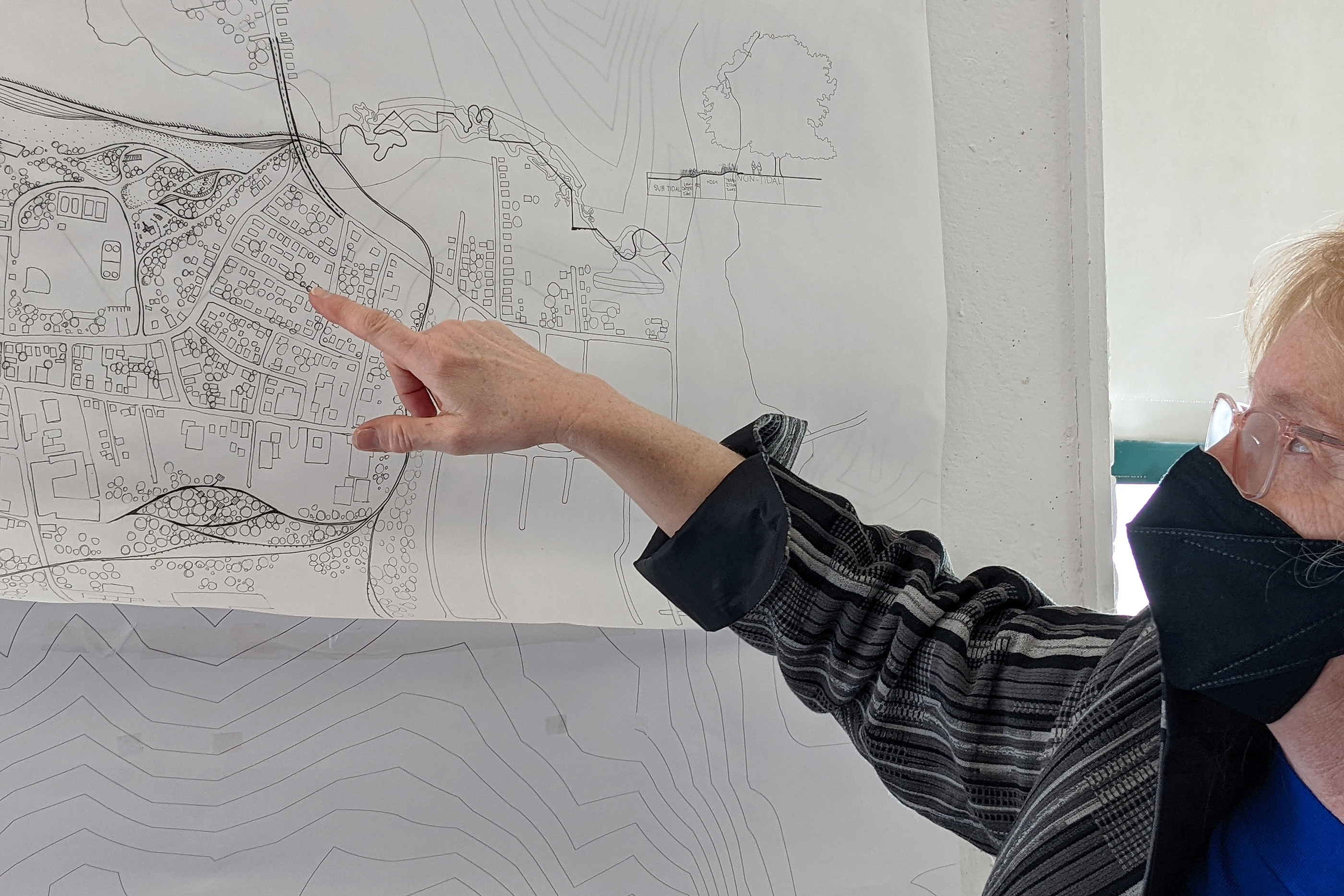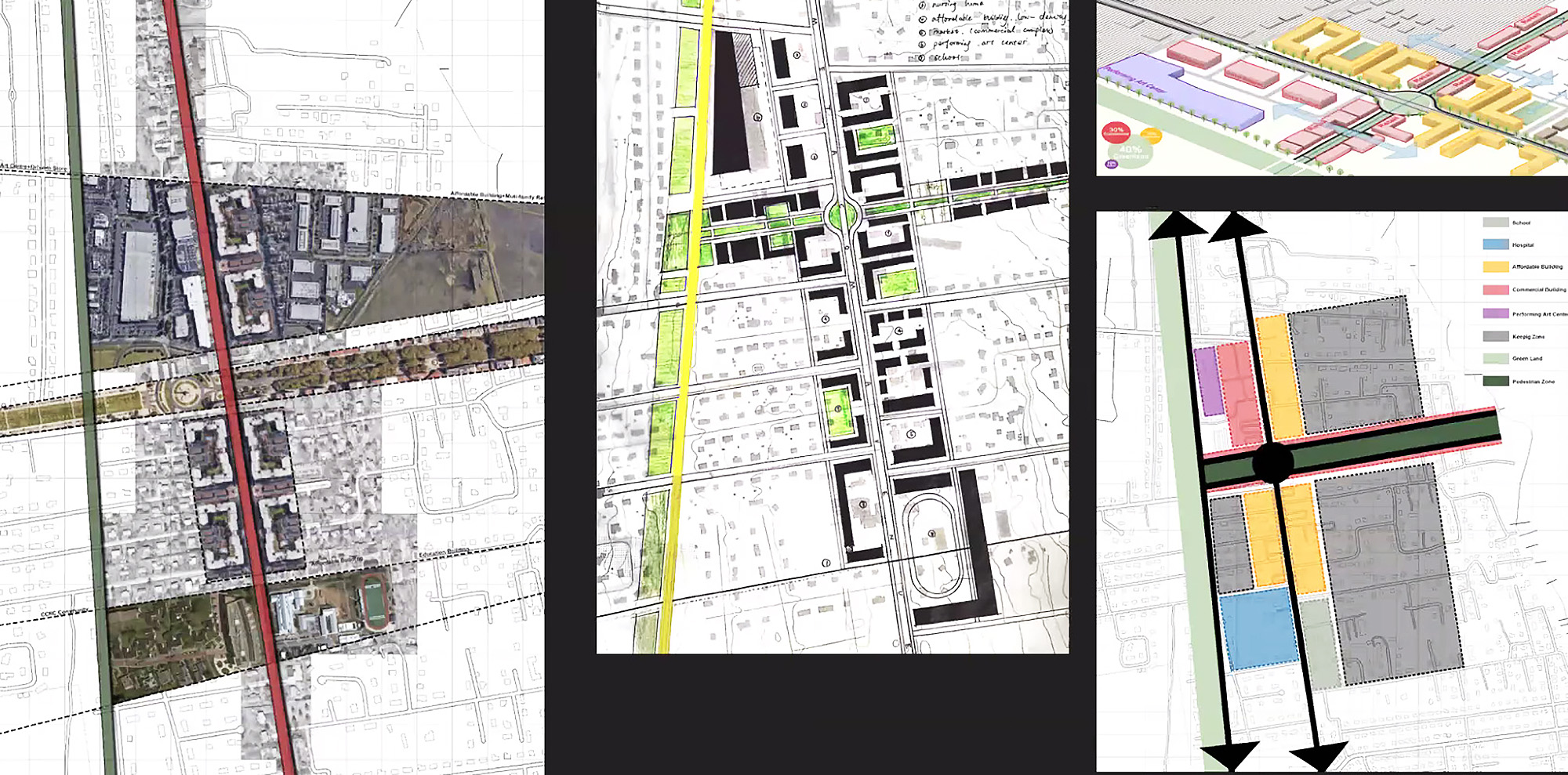A multidisciplinary fall studio allows students to imagine positive solutions to looming global problems and speculate about possible paths to getting there.
Getting Ahead of Climate Change

RISD Architecture students modeling possible futures in response to sea-level rise in the Narragansett Bay bring something unique to the table: an experimental, hands-on approach that inspires local citizens to view the problem with fresh eyes. “Most people don’t see what isn’t there,” Architecture Professor Anne Tate explains, “but these students do. The projects they’re working on as part of the Envision Resilience Challenge counter public anxiety with visions of possibility.”

Tate’s class is part of a six-university consortium studying rising sea levels throughout the bay and concentrating on the region’s most vulnerable sites. While Landscape Architecture students working with Professor Lili Hermann are focusing on South Providence, these students are aiming their efforts at the quiet, seaside town of Warren, RI, which is expected to lose 200 historic homes to rising seas in the coming years.
Despite its modest size, the town has developed a $138 million relocation plan for its low-lying Market Street neighborhood that would also rezone and revitalize its now commercial-only Metacom Avenue with the hope of “reimagining the development of an auto-centric commercial zone into a true mixed-use, sustainably redesigned neighborhood.”


Students began by visiting the site and sketching their first impressions and then used a collaging technique to imagine a totally new Metacom Avenue as either a primary or secondary town center. “Metacom is so big that it’s hard to get a sense of scale,” Tate explains. The collages spark new conversations and ideas about how an “up-zoned” neighborhood might serve the community with new housing, green spaces and even a performing arts center.
“These visuals are really impactful and a great way to communicate the issues to homeowners and the community at large.”
In early April the students presented their ideas virtually to the larger Envision Resilience Challenge cohort (including teams from Northeastern University, Syracuse University, University of Rhode Island, Roger Williams University and University of Florida), who found their sketches and early proposals compelling and refreshing. “These visuals are really impactful and a great way to communicate the issues to homeowners and the community at large,” noted Alyssa Lozupone, director of preservation at the Newport Restoration Foundation.

Architecture faculty member Laura Briggs BArch 82, who is co-teaching the class, shared some early thoughts with the group about using hemp mixed with lime as a building material far less harmful to the environment than concrete and able to withstand periodic flooding. “We’re looking at the problem of urban design at multiple scales and starting with understanding a very old material in new ways,” she says. “Hempcrete is naturally regenerative, insulative, fireproof and carbon-sequestering, which means that projects that incorporate it can achieve net zero energy use and become carbon positive over time.”
“We’re looking at the problem of urban design at multiple scales and starting with understanding a very old material in new ways.”
Tate adds that the students are considering hemp as a possible Rhode Island industry that could provide much-needed green jobs. “It’s a resilient and fast-growing crop that got caught up in anti-marijuana legislation for decades and is only reemerging now,” she notes.

Tate reviewed student proposals in the Bayard Ewing Building a few days after the encouraging online gathering. “Organize your design around one movement,” she advised one student team. “And remember to leave space for the messy stuff like parking lots and delivery trucks. If your grandmother lived here, where would she drive up with her groceries?”
“Organize your design around one movement and remember to leave space for the messy stuff like parking lots and delivery trucks.”
She also recommended incorporating outdoor space for each residential unit and advised that students consider building up, at least for commercial spaces. “Try doubling the height of everything on Metacom,” she suggested.

Is Tate worried that the completed proposals with their hempcrete construction and green roofs will be too outlandish, too forward-thinking to be taken seriously by city planners? Not at all. “Our job at RISD is to look out—far ahead—and open space for the community to move forward,” she says. “The goal is to put in place the mechanisms that allow for things to change over time.”
—Simone Solondz
Student designs responding to sea-level rise around the Narragansett Bay will be on view at Providence’s WaterFire Arts Centre beginning June 4.
May 2, 2022


